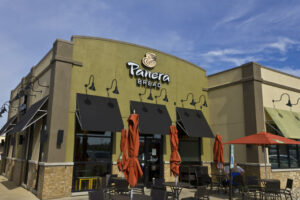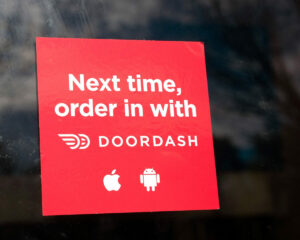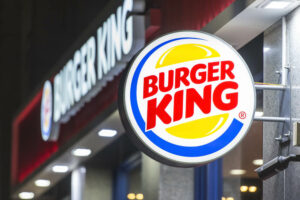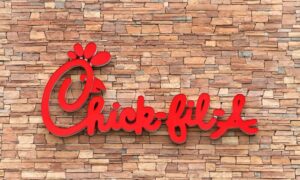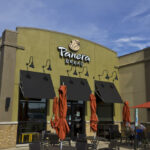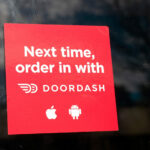“Must-have” is a term that we don’t use lightly, and while the American Express Blue Cash Preferred Card has its drawbacks, it’s about as close to an essential cash back card as we’ve has the pleasure to review.
Unfortunately, all these goodies come with a price. For the privilege of using Blue Cash Preferred, you’ll be charged a $95 annual fee starting in year two. This, and a few irksome bonus category restrictions knock our rating down a peg — but they’re minor quibbles to what is otherwise an elite cash back card that should have a home in most wallets.
The latest Amex Blue Cash Preferred welcome bonus
- Earn $300 back after spending $3,000 on purchases within the first 6 months, issued as a statement credit
- $95 annual fee waived for the first year
- 0% intro APR for the first 12 months on purchases, then a variable APR from 14.24% – 24.24%
- Total value: $425 – $575
The welcome bonuses offered by cash back credit cards tend to be modest, at least compared to those awarded by premier points cards. Blue Cash Preferred doesn’t stray from this tradition, keeping it simple with a $300 bonus that is issued as a statement credit, which is essentially as good as cash.
For a cash back card, a $300 bonus is on the high end, and the 6-month timeline to meet the purchase requirement is fair. However, most other cards in this class don’t make you spend anywhere near $3,000 to unlock the bonus. For instance, the Chase Freedom Flex only asks that you spend $500 in 3 months to earn $200. This is an effective cash back rate of 40%. Blue Cash Preferred’s cash back rate is just 10%.
Note: American Express takes a pretty hard stance against bonus exploitation. If you try to return your purchases or cancel your account within 12 months, they may take away your bonus. Also, cash equivalent purchases like gift cards or peer-to-peer transfers do not count toward the purchase requirement.
That being said, the $95 annual fee is waived for the first year. On top of that, new users will enjoy an introductory 0% APR for the first 12 months, but only on purchases.
If you’re spending $3,000, then you’ll earn anywhere from 1-6% cash back on those purchases, bolstering the total value of the welcome bonus to as high as $575. For a cash back card, that’s pretty amazing.
Blue Cash Preferred Card from American Express Review
Product Name: American Express Blue Cash Preferred
The Final Verdict
With the exception of dining, Blue Cash Preferred by American Express offers best-in-class cash back rates on nearly every everyday category, making it a top-tier credit card for families. It does come with a hefty annual fee of $95, but that’s easily offset by modest spending at U.S. supermarkets, or on streaming services, gas, or transit.
Pros
- Industry-leading cash back rate on U.S. supermarket and streaming services
- Strong rates on U.S gas and transit
- Generous welcome bonus, at least for a cash back card
- First year annual fee is waived
- 0% Intro APR period on purchases
Cons
- $95 annual fee — but it’s easily offset
- Not the best choice for travelers
- Bonus category restrictions
- Requires a healthy credit score to obtain (~670+)
Who is Amex Blue Cash Preferred for?
There’s aren’t many cards on the market that hit more bonus categories than Blue Cash Preferred. Actually, there might not be any. Groceries? Covered. Gas? Covered. Transit? You get the idea. It even hits niche categories like streaming and transit.
- 6% cash back on U.S. supermarket purchases, up to $6,000 per year
- 6% on select U.S. streaming subscriptions
- 3% at U.S. gas stations
- 3% on transit (taxis/rideshare, parking, tolls, trains, buses, and more)
- 1% on all other purchases
For most families, the benefits are going to vastly offset the pesky annual fee. We’ll even go as far as to say that Blue Cash Preferred practically negates the need to carry more than one other cash back card.
A big win for U.S. supermarket spenders
Blue Cash Preferred by American Express offers an industry-leading 6% cash back on groceries. Admittedly, there’s a slew of other cash back cards that offer as much as 5% without an annual fee. But you’ll either be forced to shop exclusively at one store (Chase Amazon Prime Rewards) or will only have the access to the 5% grocery category one quarter of the year.
Other solid grocery card options, like Citi Custom Cash award 5% cash back on groceries, pending it’s your highest spend category that month. The award is capped at just $25 monthly.

The only cards with a bigger potential upside than Amex Blue Cash Preferred are those where points can be redeemed for travel. For instance, American Express Gold offers 4x on groceries, which translates to an average of 8% back when transferred to an Amex travel partner, but much less when exchanged for cash.
There are a few major caveats, namely that the 6% rate is capped to the first $6,000 spent annually. After that, it drops to a measly 1%. Also, it’s important to recognize that the 6% applies to U.S. supermarket purchases only. Stores where groceries occupy only one section of the floor, like Walmart and Target, don’t count. Warehouse clubs like Costco and BJ’s are also excluded, as are specialty shops.
At a 6% cash back rate, you’ll only need to spend $1583 annually, or $30.45 weekly, to fully absorb the annual fee. That’s great, but we want to also ensure that we’re getting more value than cards with lower cash back rates, but no annual fee. Here are your break-even points:
Blue Cash Preferred vs. $0 annual fee cards (break even points)
| Grocery cash back | Annual fee | Break-even point |
|---|---|---|
| 3% | 0% | $3,167 |
| 2% | 0% | $2,375 |
| 1.5% | 0% | $2,111 |
Not bad. Even if you only utilize just over half the annual cap each year, Blue Cash Preferred proves a better option than a card like American Express Blue Cash Everyday, which offers 3% cash back on groceries and no annual fee.
Elite savings on streaming services
The combination of the COVID-19 pandemic and a myriad of new platform launches has been a boon for the streaming industry. Nowadays, it isn’t uncommon for a family to have four or more streaming services. This upward trend may level off as the pandemic cools, but streaming is here to stay.

Blue Cash Preferred offers the highest cash back rate (6%) on these expenditures, and second place isn’t even in the rearview mirror. Still, even if you spend $600 per year on streaming, 6% only equates to $36 bucks. Not a huge deal, but it’s basically free money and helps to further justify the annual fee.
Note: Nearly all popular streaming services are eligible for 6% cash back, including newcomers like Paramount+. For an inclusive list, check this page out.
For the streaming services category, there is no cap on the amount you can earn.
Cash back for on-the-go cardholders
A 3% cash back rate at U.S. gas stations isn’t unheard of, but it’s still in the upper echelon. Just be aware, that in order to count, the gas station must sell gasoline as its primary business. Supermarkets, superstores, and warehouse clubs that also sell gas are excluded.
Convenience stores typically do count as gas stations, opening up opportunities to “double-dip” should customers also be part of that convenience store’s rewards program.
On transit, Blue Cash Preferred is once again in a league of its own. Yes, there are points cards that offer attractive bonus multipliers on transit, but it’s highly irregular for a cash back card to do the same. Taxi/rideshare services, buses, trains, parking, and tolls are all covered, much to the delight of folks who spend a lot of time commuting. You’ll receive 3% cash back on these services, uncapped.
Who should skip Amex Blue Cash Preferred?
Frequent travelers
If frequent jaunts to the far reaches of the world are your thing, then the Blue Cash Preferred card might not be for you. There is no travel bonus category associated with this card, and your cash back cannot be converted to valuable AmEx Membership Rewards points. Furthermore, you’ll be zonked with a 2.7% foreign transaction fee on each purchase made abroad.
To top it off, recall that the 6% supermarket and 3% gas categories only apply to purchases made in the U.S.
Restaurant and takeout junkies
The one broad everyday category that’s missing from Blue Cash Preferred is dining. If most of your meals are delivered by a Grubhub or DoorDash driver, or you can’t stand the thought of going to the grocery store for more than the bare essentials, this card won’t be the best fit.
Sure, you’ll still generate 1% cash back on dining, but there are far better options available.
Low-interest hunters
The 0% intro APR only applies to purchases, and even then, the period is only 12 months. After that the APR spikes to 14.24% – 24.24%, based on creditworthiness. There are better deals out there for those looking to transfer an existing balance, or who know they won’t be completely paying down their credit card bills each month.
Beware the supermarket cap
Big supermarket spenders will want to pair the Blue Cash Preferred Card with another one, as once you spend $6,000, the cash back rate will drop to an uninspiring 1%.
One way around this is for both you and your spouse to acquire a Blue Cash Preferred. This will double your allotted spend to $12,000, but also double your annual fees. Only pursue this avenue if you’re frequently spending $200 a week or more at the supermarket.
A more conservative route is to grab a backup card that awards a cash back bonus on groceries, but doesn’t charge an annual fee.
Redeeming cash back
Due to their simple rewards structures, cash back cards are well suited for beginners. If you earn one cent, you get one cent. Blue Cash Preferred is no exception to this rule, offering customers three straightforward ways to spend their rewards, all at a 1:1 redemption rate.
- Statement credit (min. $25)
- Gift cards
- Merchandise through the AmEx portal

In reality, the only good option is to take a statement credit, as the same merchandise can be purchased elsewhere, and then paid for with rewards. This will allow you to generate cash back on the purchase, and every bit counts.
Amex Blue Cash Preferred: Other perks
Blue Cash Preferred doesn’t offer much in the way of extra amenities, but that’s par for the course for cash back cards. You will receive a few nice features, including:
- Plan It: A service that allows AmEx customers to split up large purchases of $100 or more into easy monthly payments. It’s interest-free, but there is a fixed fee.
- A $120 Equinox+ credit that can be used to pay for subscriptions at equinoxplus.com. Refunded as $10 monthly statement credits.
- Access to Amex Experiences
- Car rental loss and damage insurance
- Return protection
Alternative card options
The fact that there isn’t a great alternative to the Blue Cash Preferred card is a testament to how strong its benefits are.
Citi Premier has an equivalent annual fee, and offers 3x points on groceries, gas, dining, air travel, and hotels — which is really extensive coverage — but transit and streaming purchases only generate 1%. Also, points are only worth 0.5 cents when redeemed for cash back (but more when used to pay bills or transferred to a travel partner). A great card, but not quite a replacement.
American Express Everyday Preferred also hits the grocery (3x) and gas categories (2x), but it’s a points card. If you’re looking to convert your rewards to cash, it’s a poor choice, offering subpar conversion rates. However, if you plan on using points for travel purchases, it becomes a top-tier budget card, as we estimate Amex Membership points to be worth double their face value when transferred to an Amex travel partner.
All this, and you receive 50% more points if you manage to use your card 30 times or more in one billing cycle.
Which cards pair best with Blue Cash Preferred?
Just as every filet mignon should to paired with the perfect wine, the Blue Cash Preferred should be matched with at least one other card to cover all your needs.
Folks who spend considerably more than $6,000 at U.S. supermarkets each year, may want to snatch up an American Express Blue Cash Everyday card. This is the Blue Cash Preferred’s little brother. It offers 3% cash back on U.S. supermarket purchases, capped at $6,000, which is solid for a no-annual fee card.
The Citi Custom Cash card is also a great backup, as it offers 5% cash back on your highest monthly spending category. Keep it around as a spare grocery card for when you go over $6,000 with Blue Cash Preferred or use it on a category that your other cards don’t cover. The big downside of Citi Custom Cash is that the 5% category is capped at just $500 per month ($25 cash back).
Chase Freedom Flex is also a solid secondary card for big supermarket spenders, as it typically features a 5% grocery category one quarter per year. So you can use Blue Cash Preferred most of the year, and switch out to Freedom Flex when groceries (or Whole Foods Market or Walmart) are featured.
Just be mindful that the 5% category spend is capped at $1,500 per quarter.
Note: There’s no harm in having your spouse also grab a Freedom Flex, since this card doesn’t impose an annual fee. That will increase your bonus category allowance to $3,000 per quarter.
If you want to cover groceries and dining, then SavorOne Rewards by Capital One is a viable option. This no-annual-fee card offers 3% on dining, and an additional 3% on the very niche entertainment category, which includes movies, concerts, live sports, museums, dance clubs, zoos, aquariums, and more. It’s also a decent backup grocery card, offering 2% cash back uncapped.
Amex Blue Cash Preferred FAQ
Is Amex Blue Cash Preferred worth it?
The $95 annual fee is easily offset if you spend a lot on groceries, streaming services, gas, and transit. Users only need to spend roughly $1,600 annually on a 6% category for the annual fee to pay for itself.
What are the credit score requirements for Amex Blue Cash Preferred?
Generally speaking, applicants will need a good credit score to be approved. A 670+ score will probably cut it, although credit score is just one of several factors that American Express takes into account when considering an application.
Does Amex Blue Cash Preferred work at Walmart?
Users are free to use Blue Cash Preferred at Walmart. However, groceries purchased at Walmart and other superstores like Target will not be eligible for 6% cash back. Warehouse clubs like Costco and Sam’s Club, specialty stores, gourmet stores, and convenience stores are also not categorized as supermarkets. Users will still receive the base cash back rate of 1% on grocery purchases made at excluded stores.
What is the difference between Blue Cash Everyday and Blue Cash Preferred?
The main difference is that Blue Cash Preferred carries an annual fee of $95 and offers increased cash back rates on groceries and gas, as well as, streaming service and transit bonus categories. Blue Cash Everyday does not carry an annual fee, but only awards 3% cash back on groceries, 2% at U.S. gas stations, and 1% on everything else.





